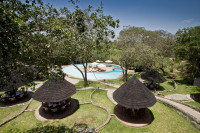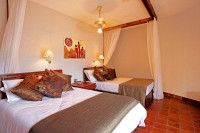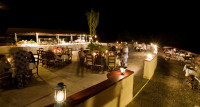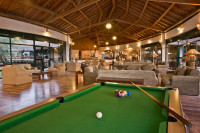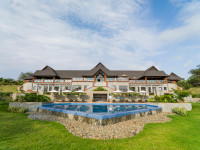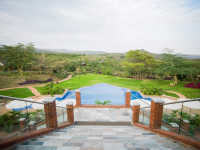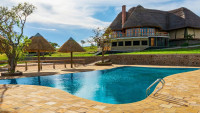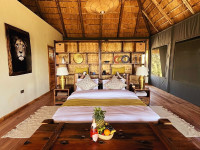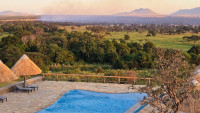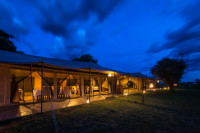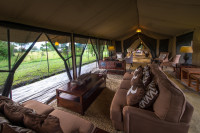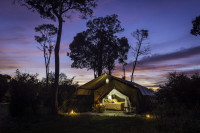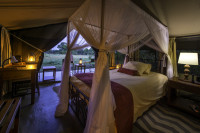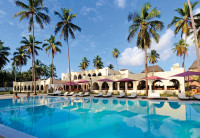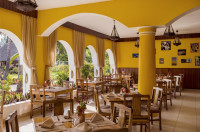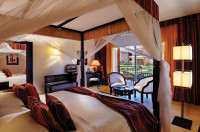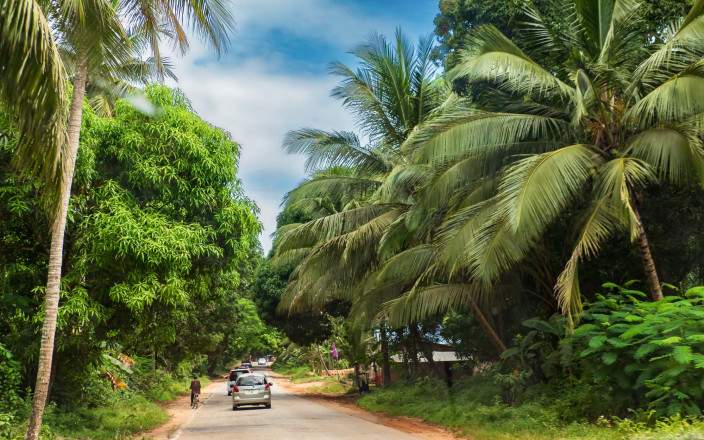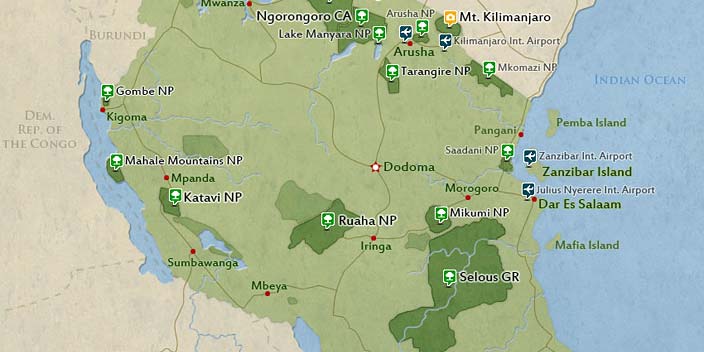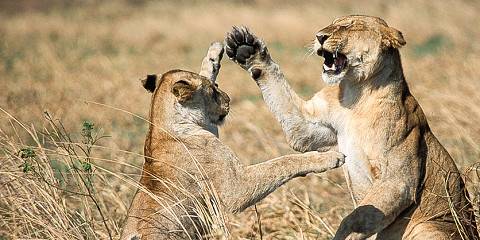
$6,064 to $6,698 pp (USD)
2 travelers on Start dateArrival
Arrival

Day 1
Arusha to Tarangire National Park
Arusha to Tarangire National Park
You are picked up from your lodge/Airport in Arusha, early in the morning to start the beautiful journey to Tarangire National Park while carrying lunch boxes.
Tarangire National Park is situated in northern Tanzania, it covers about 2,850 square kilometers of varied terrain—rolling plains, acacia woodlands, and scattered baobab trees. The Tarangire River runs through the park, sustaining abundant wildlife, especially during the dry season when animals migrate from surrounding areas in search of water.
The park is best known for its impressive elephant populations and seasonal gatherings of wildebeest, zebra, buffalo, giraffe, and antelope, often accompanied by predators such as lions and leopards. With over 550 bird species, Tarangire is also a major ornithological haven.
Peaceful and scenic, Tarangire combines classic East African landscapes with exceptional wildlife density, offering an intimate safari experience away from the larger crowds of the Serengeti.
- Main Destination:
- Tarangire National Park
- Accommodation:
- Tarangire Sopa Lodge
- Meals & Drinks:

Day 2
Tarangire to Karatu
Tarangire to Karatu
After breakfast at the lodge, you will proceed for morning game drive at Tarangire National Park, a scenic haven nestled along the Tarangire River in the Great Rift Valley. When the morning game drive is complete you will drive to Karatu. check in for dinner at your lodge and stay overnight, relax, and prepare in anticipation of the adventures to come.
- Main Destination:
- Ngorongoro Crater
- Accommodation:
- The Retreat at Ngorongoro Lodge
- Meals & Drinks:

Day 3
Ngorongoro Crater
Ngorongoro Crater
After breakfast, you depart for Ngorongoro Conservation Area for a game drive inside Ngorongoro Crater while carrying lunch boxes. Once the game drives are complete, you will drive to Central Serengeti, check in for dinner at the lodge/camp.
Ngorongoro Crater has been compared to the Garden of Eden. Ngorongoro Crater, an extinct collapsed volcano, rising 7,500 feet at the rim with the floor being 2,000 feet below. This is all that remains of a once-vast volcano that is a part of the Great Rift Valley, the longest continuous crack in the earth' s crust. Ngorongoro' s floor extends 102 square miles with
alkaline Lake Magadi in the center. The crater is an island sanctuary, protected from the fluctuating weather conditions on the surrounding.
About 30 000 large mammals are resident all year round (such as buffaloes, lions, elephants, cheetahs, and rhinos), and a wide variety of birds (such as flamingos, eagles, and buzzards).
- Main Destination:
- Ngorongoro Crater
- Accommodation:
- Serengeti Orangi River Luxury Lodge
- Meals & Drinks:

Day 4
Central serengeti National Park
Central serengeti National Park
After an early breakfast, the focus is a full-day game drive in and around the Seronera Valley, the park’s wildlife hub. The area’s mix of open plains, acacia woodlands, and kopjes provides excellent opportunities to spot big cats—particularly lions, leopards, and cheetahs—as well as elephants, giraffes, buffalo, zebra, and various antelope species.
The Seronera River attracts wildlife year-round, ensuring consistent sightings. This day typically includes morning and afternoon drives to maximize wildlife encounters, with stops for picnics or photography at scenic viewpoints. The Central Serengeti’s combination of high predator density, iconic landscapes, and reliable wildlife activity makes it ideal for immersive safari experiences.
Optional activities may include a hot-air balloon safari at sunrise for panoramic views of the plains and wildlife below.
- Main Destination:
- Central Serengeti National Park
- Accommodation:
- Serengeti Orangi River Luxury Lodge
- Meals & Drinks:

Day 5
Northern serengeti National Park
Northern serengeti National Park
After breakfast check out and proceed to Northern serengeti
The Northern Serengeti is the park’s most remote and expansive region, covering vast open plains and riverine forests that are less frequented by tourists. It is the primary area for the Great Migration crossings. When wildebeest and zebra traverse the Mara River in search of fresh grazing, attracting crocodiles and large predators.
This region is known for dramatic landscapes of rolling grasslands, scattered kopjes, and seasonal rivers. Wildlife is abundant, including lions, cheetahs, elephants, giraffes, buffalo, and a variety of antelopes, often in large herds. Its remoteness offers exclusive safari experiences, fewer vehicles, and the opportunity to witness intense predator–prey interactions associated with migration.
The Northern Serengeti provides a combination of spectacular wildlife, iconic migration scenes, and unspoiled scenery, making it a highlight for adventurous safari travelers.
- Main Destination:
- Serengeti National Park
- Accommodation:
- Serengeti Mara River Camp
- Meals & Drinks:

Day 6
Nothern Serengeti National Park
Nothern Serengeti National Park
On the second day in the Northern Serengeti, the focus is a full-day game drive in the remote northern plains, an area famous for the Great Migration (typically May–July). Guests explore vast open savannahs and riverine areas, observing large herds of wildebeest and zebra, as well as predators like lions, cheetahs, and hyenas tracking the herds.
The day includes multiple morning and afternoon drives, with stops at scenic kopjes and river crossings for photography and wildlife observation. The region’s low visitor density allows for more intimate wildlife encounters, making it ideal for spotting both predators and migratory herbivores in dramatic, unspoiled landscapes.
This day emphasizes migration dynamics, predator-prey interactions, and expansive Northern Serengeti vistas, offering a quintessential and immersive safari experience.
- Main Destination:
- Northern Serengeti National Park
- Accommodation:
- Serengeti Mara River Camp
- Meals & Drinks:

Day 7
Zanzibar
Zanzibar
After breakfast you will be transferred toKongatende Airport for your flight to Zanzibar. On arrival at Zanzibar Airport you will be welcomed by a member of our team and transferred approximately to Kengwa beach for Overnight
Kiwengwa Beach, on Zanzibar’s northeastern coast, is known for white sandy shores, turquoise waters, and swaying coconut palms. Its tidal sandbanks and coral reefs make it ideal for snorkeling, diving, and water sports, while beachside resorts and restaurants offer comfortable stays and fresh seafood. It’s perfect for both relaxation and adventure.
- Main Destination:
- Kiwengwa (Zanzibar)
- Accommodation:
- Tui Blue Bahari Zanzibar
- Meals & Drinks:

Day 8-9
Zanzibar
Zanzibar
At Kiwengwa Beach you will focus on relaxation and exploration. Guests can swim, sunbathe, or stroll along the white sands, while low tide exposes tidal pools and sandbanks ideal for snorkeling or discovering marine life. Optional activities include kayaking, paddle boarding, or visiting nearby coral reefs. The day also offers time to enjoy beachfront dining, fresh seafood, and the tropical scenery, providing a serene yet engaging beach experience.
- Main Destination:
- Kiwengwa (Zanzibar)
- Accommodation:
- Tui Blue Bahari Zanzibar
- Meals & Drinks:

Day 10
Arusha
Arusha
Today you will be transferred to Zanzibar Airport for your flight to Arusha.
Arusha, located in northern Tanzania at the foothills of Mount Meru, is a vibrant city known as the gateway to the northern safari circuit. It serves as a hub for travelers visiting Tarangire, Ngorongoro, Serengeti, and Mount Kilimanjaro. The city combines urban amenities with scenic surroundings, featuring bustling markets, cultural centers, and coffee plantations.
Arusha’s backdrop of volcanic hills and Mount Meru provides stunning scenery, while its climate—moderate and temperate due to its elevation (~1,400 meters above sea level)—makes it comfortable year-round. The city also hosts museums, wildlife conservation offices, and local artisan markets, offering insights into Tanzanian culture and wildlife conservation efforts.
Arusha is both a logistical hub for safaris and a cultural stop, blending natural beauty with local commerce and history.
- Main Destination:
- Arusha (City)
- Accommodation:
- No accommodation (End of tour)
- Meals & Drinks:















